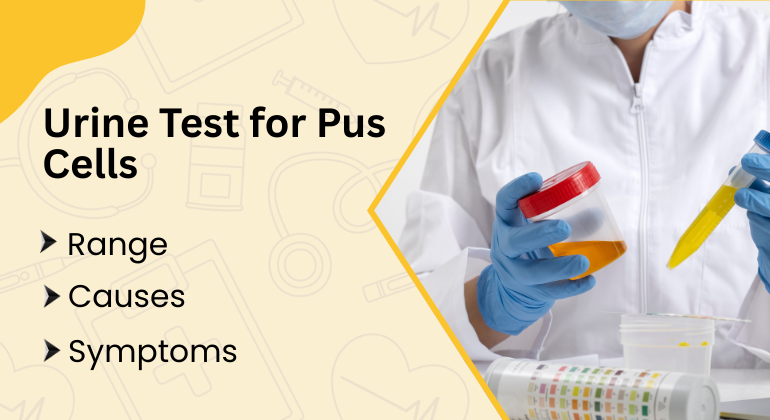PCV Blood Test: Normal Range and Risk of Diseases
.webp)
A Packed Cell Volume test, or PCV test, is a routine blood test that measures the proportion of red blood cells in your blood sample.
Analysing this vital parameter, helps healthcare professionals assess your blood's oxygen-carrying capacity. It helps detect any potential abnormalities that may indicate an underlying health condition or imbalance within your body.
This screening test is used to identify the conditions of dehydration, anaemia, or polycythemia in individuals. Here, we will analyse all the essential aspects of PCV blood test below, understanding its range, factors, and reasons why it occurs.
What is the Normal PCV Range in Blood Tests for Adults and Women?
The blood test is conducted for several diseases, and the haematocrit test or PCV is an essential diagnostic tool. The blood contains a mixture of cells and plasma; however, red blood cells are one of the major components in the blood.
If the PCV blood test normal range is less, it indicates anaemia. However, during pregnancy, often the levels of PCV fall due to haemodilution.
The normal range of PCV is around 35-48%, with the PCV normal range male being 38.3-48.6% only. However, for women, the range for PCV is around 35.5-44.9%, which varies as per diet and pre-existing medical conditions in some cases.
In the chart below, we are going to understand the different ranges of PCV and what specific levels mean:
| Test Report | Range | Risk of Diseases |
|---|---|---|
| High PCV means | Levels that are well under the maximum of 48% |
|
| Medium PCV Levels | A PCV level of 35% or close to it | This indicates that the patient might have had the preliminary stages of anaemia onset. |
| Low PCV Levels | A PCV level below 35% |
|
What if PCV in Blood is Low?
If the PCV level in the blood is low, then it can put a strain on the cardiovascular system and weaken immunity. Some of the key causes and their effects are as follows:
1. Nutritional deficiencies
Deficiency indicates poor diet (iron), and the low PCV symptoms in such cases are Crohn’s disease. Vegans are typically at more risk, as they do not get enough iron, so supplements are always mandatory.
2. Chronic diseases
Kidney diseases are known to reduce the production of erythropoietin, and autoimmune disorders are also known to disrupt RBC synthesis.
3. Blood Loss
Blood loss can happen due to any condition, including surgery or heavy menstrual flow. Slow gastrointestinal bleeding, like ulcers and colon cancers, are also known to cause issues.
How to Increase PCV in Blood?
The steps to increase the levels of PCV in your blood depend from one patient to the other. Lifestyle and pre-existing conditions can play a major role in the levels of PCV in your blood. So, it is best to refer to your physician before taking any drastic measures. However, you might opt for the following:
-
Dietary Related Modifications
Red meat, poultry, and fish are some of the important ways to increase Haeme content. Ultimately, it increases the RBC production to increase the levels of PCV in your blood. Additionally, you must also take supplements for Vitamin B12 and folate for RBC production in your body.
-
Medical Interventions (to be consulted before opting)
Synthetic erythropoietin-stimulating agents, or ESAs, are known to improve the health of your Kidneys. Thus, erythropoietin ultimately helps improve the PCV levels as the production of RBCs due to it increases.
-
Lifestyle Related Adjustments
Manage your menstrual health and avoid heavy flow, as it decreases the levels of RBCs in your blood. Take hormonal contraceptives or iron therapy if there is heavy blood loss; additionally, stay hydrated during such time.
Conclusion
PCV is a vital indicator of blood health, with normal ranges differing between men and women. High PCV (polycythemia) may signal dehydration, hypoxia, or bone marrow disorders, while low PCV often points to anaemia from nutritional deficits, chronic disease, or blood loss.
Addressing the abnormalities beforehand through diet and supplements can prevent complications like thrombosis and heart strain.
DISCLAIMER: THIS WEBSITE DOES NOT PROVIDE MEDICAL ADVICE. The information including text, graphics, images, and other material contained on this website is for informational purposes only. No material on this site is intended to be a substitute for professional medical advice, diagnosis, or treatment. Contact a health expert if you have questions about your health.




.webp)



Comments List